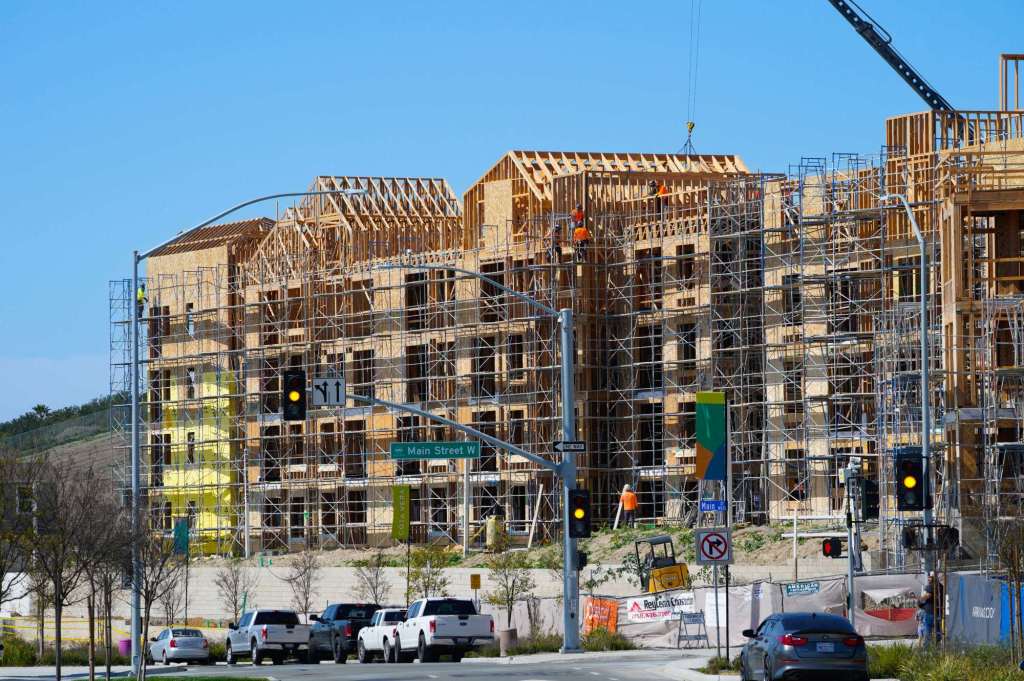It’s been happening for years.
Gov. Gavin Newsom last week signed another “historic” bill aimed at making it easier and faster to build high-density housing in an effort to bring down the high cost of homes in California. The reaction to the success of Senate Bill 79 was also familiar.
Supporters lauded the new law, which allows tall buildings along transit corridors, as a breakthrough in the state’s protracted housing crisis. Community groups and some municipal officials condemned the measure, maintaining it will force too much housing in some areas that can’t handle it, change the character of neighborhoods and ride roughshod over local governments by usurping their land-use authority.
As with other pro-housing bills, the hopes on one side and fears on the other likely won’t be realized, at least not for a good while.
The city of San Diego for years has paralleled the state’s approach on housing, allowing more density, streamlining development regulations and pushing high-rise projects near transit lines. So the city may be less affected by SB 79 than other municipalities in the county.
Yet despite its gung-ho attitude, San Diego’s record on housing has been spotty. The city is well off the pace to meet state-mandated housing goals. The bulk of the new units approved last year are market-rate, and the city is far behind in approving subsidized units for moderate-income and low-income residents, according to David Garrick of The San Diego Union-Tribune.
While state laws doing away with regulations to facilitate higher-density construction collectively had been viewed in some quarters as almost a silver bullet to solve the state’s housing problem, it has increasingly come into focus that other factors are equally important, maybe more so.
High mortgage and borrowing rates, the cost of materials and labor, the price of land and, in particular, state construction liability law have had a huge impact on keeping the state and local housing stock well below what’s needed.
Any discussion of the effect of these state laws on prices requires this context: It will take time for them to really kick in. After all, supporters of these statutes say, decades of state and local building regulations and neighborhood opposition slowed housing construction across the state.
Housing production has fallen short for at least 20 years, according to Gary London, senior principal at the real estate economics firm London Moeder Advisors. He estimates the San Diego region is behind by about 100,000 units.
“It would require massive amounts of housing development to make up this deficit,” he said. “It’s unrealistic that we’re going to get there in the foreseeable future, which means even though we’re building some housing, it’s not likely to result in lower prices.”
The pro-housing push in Sacramento is several years old now, though some key bills like SB 79 have just been signed. Similarly, Newsom and housing advocates expect great things from the measure he signed earlier this year reforming the California Environmental Quality Act to make it easier to build.
For many years, there’s been an intense debate about whether increasing the housing supply actually lowers prices. All the other factors notwithstanding, there are some signs nationally and locally that building more homes can slow the increase in rents, and even reduce them. (Further, the so-called density bonuses in many laws require at least a small percentage of rent-restricted units for lower-income residents.)
Rents dropped at least slightly in some areas of San Diego County earlier this year as thousands of new apartments started coming online, according to Phillip Molnar of the Union-Tribune. It’s hard to pin down whether there was a cause and effect, or the extent to which state housing laws may have spurred the rental construction.
Home purchase prices, however, tend to be on a different trajectory.
San Diego County rents increased 37.1 percent from 2020 through the second quarter of this year, according to the state’s “California Housing Affordability Tracker.” In that same period, the monthly payment for a newly purchased “bottom-tier” home rose 105 percent.
A big problem here is that the construction industry, aside from single-family homes, has been overwhelmingly building apartments rather than for-sale multifamily buildings such as condominiums, townhomes and row houses.
There’s broad agreement that the main reason is the added cost of construction defect liability insurance and payouts, which essentially apply to multifamily for-sale units and, because of various dynamics, not to apartments or single-family home development.
Increasingly, housing advocates are calling for changes in the law.
“Until the state addresses the condo construction liability issue, the for-sale and rental markets will continue to move independently,” said Ryan Clumpner, vice chair of the San Diego Housing Commission. “Condos are increasingly scarce and unaffordable, while apartment renters are beginning to feel the impact of other housing reforms that have spurred construction.”
The liability law has created a cottage industry where lawsuits and settlements are almost automatic.
Stephen Russell, president & CEO of the San Diego Housing Federation, said the law’s good intentions of protecting buyers have been overshadowed by the reality that it has discouraged for-sale multifamily projects, according to the Voice of San Diego.
“We need to be able to do a condominium without fear of the construction defect litigation shutting it down,” Russell said at the recent Politifest put on by the Voice.
London said such changes are needed to fill a crucial missing link in the housing market
“Condominiums have not been aggressively built for over a decade,” he said. “The easiest way to address the housing problem is to build condominiums.”
While London applauds the state’s pro-housing laws, he said they are too focused “on the number of units, not the type of units that can be delivered.”
Amid the rapid-fire action on housing bills, some believe it’s time for evaluation.
The Assembly housing committee earlier this year launched an effort to try to determine which laws are working, which ones aren’t, and why.

